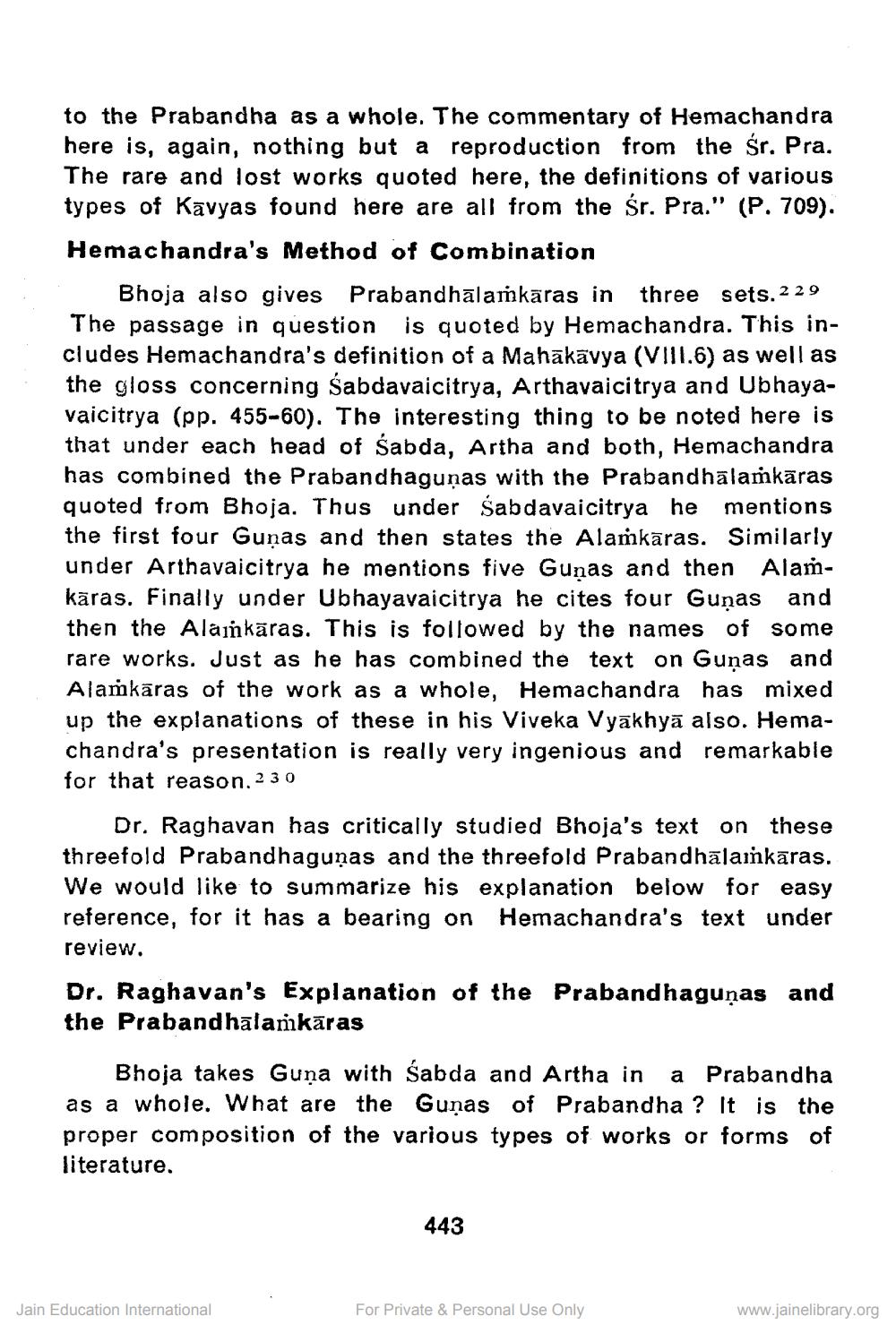________________
to the Prabandha as a whole. The commentary of Hemachandra here is, again, nothing but a reproduction from the śr. Pra. The rare and lost works quoted here, the definitions of various types of Kavyas found here are all from the śr. Pra." (P. 709). Hemachandra's Method of Combination
Bhoja also gives Prabandhālaṁkāras in three sets. 229 The passage in question is quoted by Hemachandra. This includes Hemachandra's definition of a Mahākāvya (VI11.6) as well as the gloss concerning sabdavaicitrya, Arthavaicitrya and Ubhayavaicitrya (pp. 455-60). The interesting thing to be noted here is that under each head of Sabda, Artha and both, Hemachandra has combined the Prabandhaguņas with the Prabandhālamkāras quoted from Bhoja. Thus under Sabdavaicitrya he mentions the first four Guņas and then states the Alamkāras. Similarly under Arthavaicitrya he mentions five Guņas and then Alamkāras. Finally under Ubhayavaicitrya he cites four Guņas and then the Alainkāras. This is followed by the names of some rare works. Just as he has combined the text on Gunas and Alamkāras of the work as a whole, Hemachandra has mixed up the explanations of these in his Viveka Vyākhyā also. Hemachandra's presentation is really very ingenious and remarkable for that reason.230
Dr. Raghavan has critically studied Bhoja's text on these threefold Prabandhaguņas and the threefold Prabandhālaikāras. We would like to summarize his explanation below for easy reference, for it has a bearing on Hemachandra's text under review. Dr. Raghavan's Explanation of the Prabandhaguņas and the Prabandhālamkāras
Bhoja takes Guna with śabda and Artha in a Prabandha as a whole. What are the Guņas of Prabandha ? It is the proper composition of the various types of works or forms of literature.
443
Jain Education International
For Private & Personal Use Only
www.jainelibrary.org




